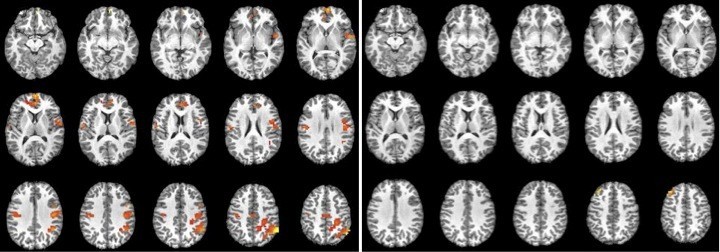Examples of problems fMRI can help with.
1) Innocence Project Cases:
The Innocence Project estimates that 3% of the incarcerated people in the United States are in fact innocent. This is over 80,000 people in the United States that are in jail but do not deserve to be there.
Problem:
Not all cases have the DNA evidence that was used to get the over 400 individuals out of jail that the Innocence Project vindicated.
Solution:
fMRI testing for truth verification
2) Rape cases
Problem: Rape in the military
There are an estimated 19,000 sexual assaults a year in the military. 3,191 were reported in 2011. CBS Nightly News stated that 8% of the 3,191 (about 240) are prosecuted and about 2% (about 60) are convicted.
So the prospective rapist sees a 60 / 19,000 (or less than 1 out of 300) chance of being convicted for the crime (Not much of a deterrent for the prospective rapist).
The person raped sees a 60 / 3,191 (or less than 1 out of 50) chance of winning a case if reported. Most rape victims think it is better to not report due to the chance of winning.
Solution:
Allow all rape victims to use fMRI verification to verify to near certainty that the crime occurred to them by the accused.
This will lead to a very high conviction rate which will add a strong deterrent to committing the crime, and lower the number of rapes in the military significantly.
Also allow all those accused of the crime to defend themselves with fMRI verification to avoid wrongful convictions.
3) Murder cases:
Example: The Gary Smith Murder case.
Medforlaw organized and financed the fMRI and testimony for.
See 10 minute video presentation http://youtu.be/fanLJGbq9SU
A peer reviewed journal article shows jurors can handle fMRI information appropriately
The Influence of fMRI Lie Detection Evidence on Juror Decision Making:
Article by: David P. McCabe, Alan D. Castel and Matthew G. Rhodes
In the current study, we report on an experiment examining whether functional magnetic
resonance imaging (fMRI) lie detection evidence would influence potential jurors’ assessment
of guilt in a criminal trial. Potential jurors (N= 330) read a vignette summarizing a trial, with
some versions of the vignette including lie detection
evidence indicating that the defendant was lying about having committed the crime. Lie
detector evidence was based on evidence from the polygraph, fMRI (functional brain imaging),
or thermal facial imaging. Results showed that fMRI lie detection evidence led to more guilty
verdicts than lie detection evidence based on polygraph evidence, thermal facial imaging, or
a control condition that did not include lie detection evidence. However, when the validity of
the fMRI lie detection evidence was called into question on cross-examination, guilty verdicts
were reduced to the level of the control condition. These results provide important information
about the influence of lie detection evidence in legal settings. Copyright © 2011 John Wiley &
Sons, Ltd.
From: Behavioral Sciences and the Law Behav. Sci. Law 29: 566–577 (2011) Published online 12
July 2011 in Wiley Online Library (wileyonlinelibrary.com) DOI: 10.1002/bsl.993
